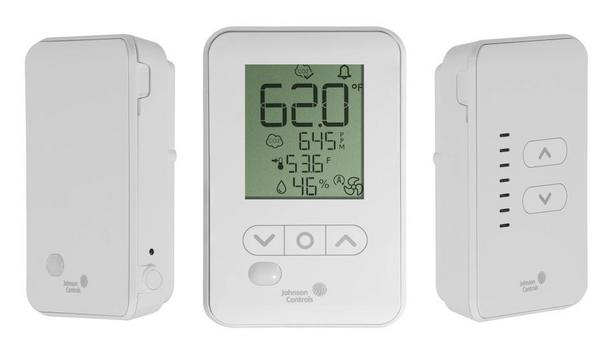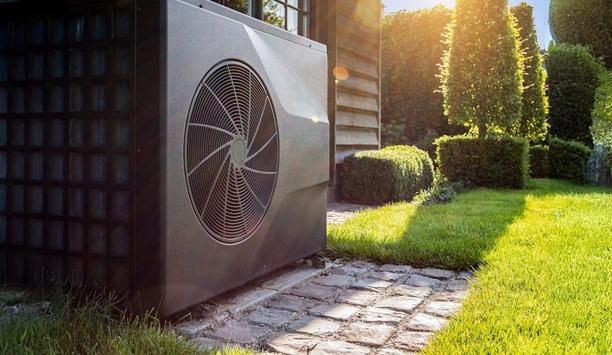The COVID-19 pandemic has changed the way the world lives, escalating the need to prioritize health and safety where we live, work, learn and play. As organizations around the world respond to the pandemic, the International WELL Building Institute (IWBI) has leveraged its expertise to help.
Impact of building surroundings
IWBI is a public benefit corporation focused on deploying “people-first places” to advance a global culture of health. The community has adopted the WELL Building Standard, which is the anchor in an ecosystem of certifications and ratings focused on creating and benchmarking health and well-being in built environments.
IWBI understands that companies have realized the importance of feeling safe inside and the importance of mental health — and how building surroundings impact that.
WELL Building Standard (WELL)
IWBI is focused on the ways that buildings, and organizations, can improve comfort and enhance health and well-being
IWBI is focused on the ways that buildings, communities, and organizations, and everything in them, can improve comfort, drive better choices and generally enhance health and well-being. The work is global, covering 2.5 billion square feet of real estate in nearly 100 countries as of June 2021.
The WELL Building Standard (WELL) is a vehicle for buildings and organizations to deliver more thoughtful and intentional places that enhance human health and well-being, according to IWBI.
It’s the standard for buildings, interior places, and communities seeking to implement, validate and measure features that support and advance human health and well-being, leading to official certification.
Measures to become WELL Certified
A building becomes WELL Certified (WELL Building) following the adoption of features from the WELL Building Standard, achieving a threshold based on measures that are validated by a third party. These measures include building performance and their impact on people’s health and well-being.
HVAC is a key element of WELL buildings. The primary purpose of HVAC systems is usually to improve the environmental conditions for the building users. Introducing outdoor air combats the buildup of carbon dioxide and volatile organic compounds, which at high levels can lead to sick building syndrome. Particle filters can remove much of the pollution from traffic or forest fires before it is introduced indoors.
Problems with HVAC
But HVAC systems can create their own problems. For example, cooling coils and drain pans can become a habitat for mold growth if not properly maintained.
The WELL Building Standard addresses issues related to air quality and HVAC systems with a holistic approach, with adaptable strategies covering air, thermal comfort, and material.
WELL Certification
The WELL Building Standard includes strategies in 10 WELL Concept areas, from HVAC systems to architectural details
The WELL Building Standard is a global framework for creating and certifying places that advance health and well-being. It includes strategies in 10 WELL Concept areas, covering topics ranging from HVAC systems to architectural details to human resource programs.
WELL Certification is granted following a third-party review that these requirements have been met in a process that involves both submissions of documentation and on-site testing and inspection.
Organizations can also enroll groups of projects in the WELL Portfolio, enabling them to document and celebrate their incremental progress in WELL feature achievement and employ the strategies at scale.
Professional engagement
Stakeholder engagement, including engagement by professionals in the HVAC space, has always been a key part of the development of WELL.
For example, there was a 6-month public comment period to solicit feedback on the WELL v2 pilot before its graduation in 2020. Also, just before completing WELL v2, a Task Force on COVID-19 and Other Respiratory Diseases sought to identify any additions that could be added in light of the pandemic.
There is also a network of more than 230 experts who participate in 14 IWBI advisories. Within this, there is an advisory for each of the 10 WELL Concepts, including 35 advisors in the Air and Thermal Comfort advisories.
Challenges
The most important challenge IWBI faces is the same one facing all others: Recovery from the COVID-19 pandemic and the ticking clock of climate change — and all that goes along with it.
“As we continue to combat COVID-19, we recognize that feeling comfortable and safe inside is more important than ever,” says Nathan Stodola, Chief Engineer at the International WELL Building Institute (IWBI).
“The pandemic has taught us the importance of air quality in preventing the spread of disease. This is a critical moment to keep the public informed on the latest scientific findings and best practices.”
Adding a human element to buildings
IWBI is working toward a future where buildings are designed with people — the human element — in mind"
“We have also learned the value and importance of mental health, and how much employees want their employers to know that,” Stodola adds.
“And IWBI is working toward a future where buildings are designed with people — the human element — in mind. There is an interconnectedness to all of this, and that’s how IWBI is working to serve the needs of the public.”
WELL Health-Safety Rating
In response to a rising need in the wake of COVID-19, IWBI introduced the WELL Health-Safety Rating for Facility Operations and Management in June 2020, a third-party validated tool designed to build confidence in the safety of a building.
The WELL Health-Safety Rating provides an efficient and effective opportunity to guide, validate, recognize and scale the efforts of owners and operators on critical health and safety issues.
Strategies undertaken
Specific to the HVAC arena, many strategies that have come to light in the pandemic have been part of WELL since its inception, including sufficient ventilation rates, operable windows, awareness of mental health needs, and proper ergonomic design of workstations.
But the Task Force on COVID-19 and Other Respiratory Infections also identified changes that have been implemented in the program, such as treating or eliminating recirculated ventilation air or allowing virtual training courses rather than requiring in-person classes.
Most strategies in WELL are “evergreen:” They will continue to have benefits to building users even after the risk of COVID-19 diminishes, says IWBI.
Programs and resources
IWBI offers several education programs and resources, as well as professional credential courses, for people in the architecture, engineering, construction, and design industries--and beyond.
IWBI offers a training program for schools to educate people on how to maintain a healthy and safe school environment
The WELL Accredited Professional (AP) program is designed for those looking to gain skills to help inform WELL projects to further advance human health and well-being in buildings and communities
IWBI also offers a training program for schools to educate people on how to maintain a healthy and safe school environment.
Focus on health and well-being
WELL buildings are not just about design and construction, but also about how to operate space and create policies that change people’s behavior for advanced health and well-being, says IWBI.
For instance, the Nourishment Concept is about providing access to healthy food, and biophilia features can help improve people’s mental health.
Caters to all markets and budgets
Additionally, people tend to think that WELL buildings are expensive or only for the luxury market. WELL applies to all types of places and can be implemented with various budget sizes based on individual projects’ health and well-being needs.
Air and Thermal Comfort concepts
The HVAC requirements in WELL are dependent on the facilities team in addition to the design team. People need buildings to provide places to live and work, and buildings need people to care for their systems.
There are several features in the Air and Thermal Comfort concepts related to the ongoing measurement of conditions within the space and maintenance of the ventilation system.






































